|
In recent years, rucking has gained popularity as a unique and effective form of outdoor exercise. Derived from military training, rucking involves walking or hiking with a loaded backpack or weighted vest, providing numerous health benefits. In this blog post, we will delve into the definition of rucking, its historical significance in military training, and the cardiovascular benefits it offers. Additionally, we will explore Dr. Peter Attia's perspective on rucking and discuss the advantages of exercising outdoors in nature. We will also provide recommendations on how to start rucking, including weight recommendations, distances, and paces. Lastly, we will touch upon the potential weight loss benefits of rucking.
Defining Rucking: Rucking is a form of exercise that involves walking or hiking with a weighted backpack or weighted vest. The weight of the backpack or vest can vary depending on individual fitness levels and goals, ranging from 10 to 50 pounds or more. Unlike traditional hiking or walking, rucking focuses on maintaining a steady pace while carrying the load, making it a challenging full-body workout. Historical Significance in Military Training: Rucking has its roots in military training, where soldiers are required to carry heavy loads during long marches. It has been an integral part of military conditioning for centuries, helping soldiers build endurance, strength, and mental resilience. Rucking not only prepares soldiers for combat situations but also enhances their overall physical fitness. Examples of Rucking: Rucking can be performed in various settings, such as parks, trails, or even urban environments. It can be as simple as strapping on a backpack filled with weight or wearing a weighted vest and walking for a designated distance or time. Some enthusiasts incorporate additional challenges, such as inclines, uneven terrain, or time constraints, to intensify their rucking workouts. Getting Started with Rucking: If you're new to rucking, it's important to start gradually and listen to your body. Begin with a lighter weight, such as 10 pounds, and gradually increase the load over time. Aim to ruck for at least 30 minutes, three times a week, and gradually increase the duration as your fitness improves. Weight Recommendations: The weight you choose for rucking should be challenging but manageable. As a general guideline, beginners can start with 10-20 pounds, intermediate ruckers can aim for 20-30 pounds, and advanced individuals can go beyond 30 pounds. It's crucial to find the right balance between pushing yourself and avoiding injury. Distances and Paces: When it comes to distances and paces, it's important to find what works best for you. Start with a comfortable distance, such as 1-2 miles, and gradually increase it as your fitness improves. Aim for a steady pace, typically around 3-4 miles per hour, but adjust it based on your fitness level and terrain. Remember, the goal is to maintain a consistent pace throughout the ruck. Personal Experience with Rucking: As an avid rucker myself, I have been incorporating rucking into my exercise regimen for the past two years. Currently, I regularly ruck with a 40-pound backpack for distances of 2-3 miles, at least three times a week. Over time, I have gradually increased the weight, pushing myself up to 60 pounds on occasion. However, I have noticed that at higher weights, I experienced some shoulder discomfort and found it challenging to sustain prolonged walks. Rucking has become a vital part of my exercise routine, offering a unique and fulfilling workout experience. Not only does it provide cardiovascular benefits, but it also strengthens my entire body, particularly my legs, core, and back. The mental resilience and sense of accomplishment I gain from completing challenging rucks are unparalleled. I have found that rucking in nature, surrounded by the beauty of the outdoors, enhances the overall experience. The fresh air, peaceful surroundings, and connection with nature add an extra layer of tranquility and rejuvenation to my workouts. It serves as a form of active meditation, allowing me to clear my mind and find solace amidst the demands of daily life. Join Me on a Ruck with Your Four-Legged Friend: I invite you to give rucking a try and experience the transformative power of this outdoor cardiovascular training. Grab your backpack or weighted vest, head outdoors, and embark on a ruck adventure. And why not bring along your four-legged friend? Rucking with your dog can be a fantastic way to exercise together and strengthen your bond. It's a great way to start your day, enjoying the benefits of nature while getting a fulfilling workout. Conclusion: Rucking, derived from military training, has emerged as a popular outdoor exercise that offers numerous health benefits. Its cardiovascular advantages, including improved heart health and endurance, make it an effective form of aerobic exercise. Additionally, rucking can contribute to weight loss when combined with a balanced diet. Dr. Peter Attia supports the idea of rucking and highlights the benefits of exercising outdoors in nature. By starting gradually, choosing appropriate weights, and finding the right distances and paces, you can embark on a rewarding rucking journey. So, grab your backpack or weighted vest, head outdoors, and experience the transformative power of rucking for yourself. Join me on a ruck and invite your four-legged friend to exercise alongside you. It's a great way to start your day and bond with your furry companion while reaping the benefits of this fantastic workout.
0 Comments
Every year on September 25th, World Lung Day is observed to raise awareness about lung health and promote initiatives that aim to improve respiratory well-being worldwide. As we approach World Lung Day 2023, it is crucial to reflect on the significance of healthy lungs and the challenges faced by individuals and communities in maintaining optimal respiratory health.
The Importance of World Lung Day: World Lung Day serves as a reminder of the vital role our lungs play in our overall well-being. Our lungs enable us to breathe, providing oxygen to our bodies and removing carbon dioxide. However, lung diseases and conditions can significantly impact our quality of life, making it essential to prioritize lung health and take proactive measures to prevent and manage respiratory issues. Raising Awareness: World Lung Day provides an opportunity to raise awareness about the prevalence and impact of lung diseases globally. It is a time to educate ourselves and others about the risk factors, symptoms, and preventive measures associated with lung conditions such as asthma, chronic obstructive pulmonary disease (COPD), lung cancer, and respiratory infections. Promoting Lung Health: On this World Lung Day, let us emphasize the importance of adopting healthy lifestyle choices that support lung health. Regular exercise, a balanced diet, and avoiding tobacco smoke and other harmful pollutants are crucial steps in maintaining healthy lungs. Additionally, getting vaccinated against respiratory infections, practicing good hygiene, and seeking early medical intervention for respiratory symptoms are essential for preventing and managing lung diseases. Addressing Global Challenges: World Lung Day also highlights the global challenges faced in ensuring lung health for all. It is an opportunity to advocate for equitable access to healthcare, including affordable and quality treatment options for lung diseases. Addressing environmental factors such as air pollution and occupational hazards is crucial in reducing the burden of respiratory illnesses worldwide. Taking Action: As individuals, we can contribute to the cause by spreading awareness about World Lung Day on social media platforms, sharing informative resources, and encouraging our friends and family to prioritize their lung health. Participating in local events, fundraisers, and initiatives organized by lung health organizations can also make a significant impact. Conclusion: On World Lung Day 2023, let us come together to celebrate the gift of healthy lungs and acknowledge the challenges faced by those affected by lung diseases. By raising awareness, promoting preventive measures, and advocating for improved respiratory health globally, we can strive towards a world where everyone can breathe freely and live their lives to the fullest. Remember, healthy lungs are the foundation of a healthy life. Let's take a breath for global lung health on World Lung Day! #WorldLungDay #LungHealth #RespiratoryWellbeing #BreatheFreely “Health is not about the weight you lose but about the life you gain.” This profound quote by Dr. Josh Axe encapsulates the essence of my personal journey towards health and wellness. It's not just about shedding pounds, but about embracing a lifestyle that allows you to live more fully, more vibrantly, and more adventurously. Six years ago, I embarked on a transformative journey that saw me lose 80 pounds. But the real story isn't about the weight I lost; it's about the life I gained. Before my transformation, my weight was a constant burden. It was a physical and emotional load that held me back from truly living. I was always tired, always out of breath, and always feeling like I was on the sidelines of my own life. I was missing out on so much – the simple joys of playing with my kids without getting winded, the thrill of exploring new places, the satisfaction of accomplishing physical challenges. But as I started to focus on my health, everything began to change. I started eating healthier, exercising regularly, and taking care of my mental well-being. As the pounds started to drop, I noticed something incredible – I was gaining so much more than I was losing. I gained energy. I gained confidence. I gained a newfound appreciation for my body and what it could do. But most importantly, I gained a life that was no longer defined by my weight or my health issues. One of the most significant gains in my life has been my passion for hiking. Before my weight loss, I could barely walk a mile without feeling exhausted. Today, I am working towards climbing the 58 14ers in Colorado, a feat that seemed impossible six years ago. Each peak represents not just a physical challenge, but a testament to the life I've gained through health. With every step I take on those trails, I am reminded of my journey. The sweat, the burn in my muscles, the exhilaration of reaching the summit – these are not just about physical endurance, but about the triumph of a life reclaimed. My adventures don't stop at the mountain peaks of Colorado. My health has allowed me to travel more, to explore new places and cultures, to embark on exciting adventures that I would have never thought possible. I've been able to do more, see more, and live more. But it's not just about the grand adventures. It's also about the small, everyday joys that health has brought into my life. I can play with my kids without getting tired, I can take the stairs without getting winded, I can enjoy a meal without feeling guilty. These may seem like small victories, but they represent a life that is no longer weighed down by health issues. The journey towards health is not always easy. It requires commitment, discipline, and a lot of hard work. But the rewards are immeasurable. It's not just about the weight you lose, but about the life you gain. So, if you're standing at the start of your own health journey, remember this: every step you take towards health is a step towards a fuller, richer, more vibrant life. It's not just about losing weight, it's about gaining life. And trust me, the life you gain is worth every ounce of effort. In the words of Dr. Josh Axe, "Health is not about the weight you lose but about the life you gain." This is a mantra that has guided me through my journey and continues to inspire me every day. As I continue to climb those 58 14ers, I am not just conquering mountains, but also overcoming the limitations that once held me back. Each summit is a celebration of the life I've gained through health. But my journey doesn't end at the 58th peak. Health is a lifelong journey, and I am committed to continuing this adventure. I am excited about the possibilities that lie ahead - new challenges to conquer, new places to explore, and new experiences to enjoy.
My transformation has taught me that health is not a destination, but a journey. It's not about the number on the scale, but about the quality of life you lead. It's about being able to live your life to the fullest, free from the constraints of health issues. So, here's to gaining life through health. Here's to the adventures that await, the challenges to conquer, and the life to be lived. Here's to a life not defined by weight, but by the joy, fulfillment, and vitality that health brings. Remember, it's not about the weight you lose, but the life you gain. And that life is waiting for you. All you have to do is take that first step. In the end, the journey towards health is a journey towards a better, fuller, more vibrant life. And that, I believe, is the greatest gain of all. Traveling to different time zones can be an exciting adventure, but it can also disrupt our sleep patterns and leave us feeling groggy and fatigued. As someone currently experiencing the time difference between Atlanta and Denver, I understand the challenges firsthand. In this blog post, we will explore the common sleep challenges associated with travel and provide practical tips to help you get the best sleep possible, ensuring you feel refreshed and ready to make the most of your trip.
1. Understand Your New Time Zone: Upon arrival at your destination, adjust your mindset and activities to align with the local time. This means eating meals, engaging in activities, and going to bed according to the new time zone. By quickly adapting to the local schedule, your body will adjust more smoothly, minimizing the impact of the time change. 2. Gradually Adjust Your Sleep Schedule: If possible, start adjusting your sleep schedule a few days before your trip. Gradually shift your bedtime and wake-up time closer to the new time zone. For example, if you're traveling from Denver to Atlanta, start going to bed and waking up 15 minutes earlier each day leading up to your trip. This gradual adjustment will help your body acclimate to the time change more effectively. 3. Create a Sleep-Friendly Environment: Ensure your sleep environment is conducive to quality rest. Use blackout curtains or an eye mask to block out any unwanted light. Consider using earplugs or a white noise machine to drown out any disruptive sounds. Additionally, maintain a comfortable temperature in your room to promote better sleep. 4. Stick to a Bedtime Routine: Maintaining a consistent bedtime routine signals to your body that it's time to wind down and prepare for sleep. Engage in relaxing activities such as reading a book, taking a warm bath, or practicing deep breathing exercises. By establishing a routine, your body will recognize the cues and find it easier to fall asleep, even in a new environment. 5. Limit Exposure to Blue Light: Electronic devices emit blue light, which can interfere with your body's natural sleep-wake cycle. Minimize exposure to screens, such as smartphones, tablets, and laptops, at least an hour before bed. Instead, opt for activities that promote relaxation and prepare your mind for sleep. 6. Consider Melatonin: Melatonin is a hormone that helps regulate sleep-wake cycles. If you're struggling to adjust to the new time zone, consider taking a melatonin supplement before bed. Consult with a healthcare professional to determine the appropriate dosage and timing for your specific needs. Conclusion: Traveling to different time zones can present sleep challenges, but with a proactive approach, you can maintain sleep quality and make the most of your trip. By understanding the new time zone, gradually adjusting your sleep schedule, creating a sleep-friendly environment, sticking to a bedtime routine, limiting exposure to blue light, and considering melatonin, you can ensure a restful and rejuvenating sleep experience. So, whether you're in Atlanta, Denver, or any other destination, embrace these tips and enjoy a well-deserved night of quality sleep. Safe travels and sweet dreams! Obesity has become a significant health concern, with its prevalence steadily rising in the United States. In this blog post, we will explore how GLP-1 agonist medications, such as Ozempic, Wegovy, and Mounjaro, can be combined with lifestyle changes to maximize weight loss results. While GLP-1 medications offer a valuable tool in weight management, a holistic approach that includes lifestyle interventions can optimize long-term success. By understanding the mechanism of action, prescription and administration, typical weight loss results, potential side effects, and the impact of the obesity epidemic, we can explore the importance of coupling medication with lifestyle changes for improved outcomes.
1. GLP-1 Medications: Ozempic, Wegovy, and Mounjaro: GLP-1 medications, including Ozempic (semaglutide), Wegovy (semaglutide), and Mounjaro (liraglutide), are FDA-approved drugs for weight management. They belong to a class of medications called glucagon-like peptide-1 receptor agonists. These medications work by mimicking the effects of GLP-1, a hormone that regulates blood sugar levels and appetite. 2. Mechanism of Action: GLP-1 medications stimulate the release of insulin, which helps lower blood sugar levels. They also slow down the emptying of the stomach, leading to increased feelings of fullness and reduced appetite. Additionally, GLP-1 medications act on the brain to decrease food cravings and promote satiety. 3. Prescription and Administration: While we are happy to support you on your journey as health coaches we do not prescribe medications, you will need to talk to your healthcare provider. Healthcare professionals prescribe GLP-1 medications to individuals with a body mass index (BMI) of 30 or higher, or those with a BMI of 27 or higher with obesity-related health conditions. The dosing and administration vary for each medication: - Ozempic (semaglutide): It is administered once a week as a subcutaneous injection. The starting dose is usually 0.25 mg, which may be increased to 0.5 mg after four weeks. - Wegovy (semaglutide): It is administered once a week as a subcutaneous injection. The starting dose is 0.25 mg for the first four weeks, followed by an increase to 0.5 mg. - Mounjaro (liraglutide): It is administered once a day as a subcutaneous injection. The starting dose is 0.6 mg, which may be increased to 1.2 mg or 1.8 mg based on individual response. 4. Typical Weight Loss Results: Clinical trials have shown that GLP-1 medications can lead to significant weight loss. On average, individuals taking these medications may experience weight loss ranging from 5% to 15% of their initial body weight. However, individual results may vary, and it is important to remember that weight loss is influenced by various factors, including adherence to medication, lifestyle changes, and individual metabolism. 5. Side Effects: While GLP-1 medications are generally well-tolerated, they may have some side effects. Common side effects include nausea, vomiting, diarrhea, and constipation. These side effects are usually mild and tend to improve over time. In rare cases, more serious side effects such as pancreatitis or thyroid tumors may occur. It is important to discuss any concerns or potential side effects with your healthcare provider. 6. The Incidence of Obesity in the US and its Impact: Obesity rates in the United States have reached alarming levels, leading to an increased risk of chronic conditions such as heart disease, diabetes, and certain cancers. The obesity epidemic poses a significant burden on public health and healthcare systems. To address this, a holistic approach is necessary. 7. The Importance of Lifestyle Interventions: While GLP-1 medications offer a valuable tool in weight management, they should be coupled with lifestyle interventions for long-term success. As health coaches, we emphasize the significance of adopting a healthy, nutrient-dense diet, ensuring adequate protein intake, engaging in regular physical activity, prioritizing healthy sleep, managing stress, and cultivating a positive mindset. Conclusion: GLP-1 medications like Ozempic, Wegovy, and Mounjaro provide a promising solution in the fight against obesity. As health coaches, we are here to support individuals who are already taking these medications, helping them optimize their lifestyle for ultimate success. We believe in a holistic approach with personalized health coaching. If you are interested in exploring what health coaching looks like and how it can support your weight loss journey, we invite you to complete our health assessment. Together, we can tackle the obesity epidemic and empower individuals to lead healthier lives. Start your journey towards optimal health today! Embarking on a weight loss journey can be both exciting and challenging. While the scale is often seen as the ultimate measure of progress, it's crucial to remember that there are numerous other metrics and non-scale victories that deserve recognition. In this blog, we will explore the importance of shifting our focus from the scale to other aspects of our health journey, such as body composition, measurements, and non-scale victories. Additionally, we will discuss the significance of maintaining a positive mindset and offer guidance on establishing consistent habits for long-term success.
Beyond the Scale: Body Composition and Measurements: When it comes to weight loss, it's essential to understand that the number on the scale doesn't tell the whole story. Body composition, which refers to the ratio of fat to muscle in your body, is a more accurate indicator of progress. As you engage in regular exercise and adopt a healthy eating plan, you may notice changes in your body composition, even if the scale doesn't budge significantly. Measuring your waist, hips, and other body parts can also provide valuable insights into your progress. Remember, losing inches and gaining muscle are positive signs of a healthier body, regardless of what the scale says. We offer a combination of both the InBody and Styku scans to achieve the optimal measurement of body composition and circumference measurements. It is the most accurate way to capture the trending metrics throughout your health journey. Celebrating Non-Scale Victories: Non-scale victories (NSVs) are achievements that go beyond the numbers on the scale. These victories can include fitting into clothes that were previously too tight, having more energy throughout the day, or being able to participate in physical activities that were once challenging. By focusing on NSVs, you shift your attention to the positive changes happening within your body and mind. Celebrating these victories can boost your motivation and reinforce the idea that weight loss is not just about numbers but about overall well-being. Cultivating a Positive Mindset: Maintaining a positive mindset is crucial during any health journey. It's important to remember that progress takes time and setbacks are a natural part of the process. Here are a few tips to help you cultivate a positive mindset: a) Practice self-compassion: Be kind to yourself and acknowledge that change takes time. Avoid negative self-talk and focus on the progress you have made. b) Set realistic goals: Instead of fixating on a specific number on the scale, set achievable goals that focus on overall health and well-being. This could include incorporating more fruits and vegetables into your diet or committing to regular exercise. c) Surround yourself with support: Seek out a supportive community or enlist the help of a friend, family member or Health Coach who can provide encouragement and accountability. Sharing your journey with others can make the process more enjoyable and less daunting. Consistency in Habits: Consistency is key when it comes to achieving long-term success in your health journey. Instead of relying on short-term diets or extreme exercise regimens, focus on building sustainable habits. Here are a few habits to prioritize: a) Balanced nutrition: Aim to consume a variety of nutrient-dense foods, focusing on whole grains, lean proteins, fruits, and vegetables. Avoid restrictive diets and instead adopt a balanced approach to eating. b) Regular physical activity: Find activities you enjoy and make them a regular part of your routine. Whether it's walking, dancing, or weightlifting, consistency is more important than intensity. c) Mindful eating: Pay attention to your body's hunger and fullness cues. Eat slowly, savor your meals, and listen to your body's signals to avoid overeating. Why Not Weigh Every Day? Weighing yourself every day can be counterproductive for a few reasons. First, your weight can fluctuate throughout the day due to a number of factors, such as food, water, and exercise. This means that you may see a significant change in your weight from one day to the next, even if you're not actually gaining or losing weight. This can be discouraging and make it difficult to stay motivated. Second, weighing yourself every day can focus your attention on the scale. This can lead to unhealthy behaviors, such as restricting your food intake or overexercising. A Recommendation: A better approach is to weigh yourself once a week at the same time of day. This will help you to track your progress accurately and avoid the discouragement that can come from seeing daily fluctuations in your weight. Here are some additional tips for weighing yourself in a healthy way: Weigh yourself first thing in the morning after using the bathroom and before eating or drinking anything. Weigh yourself under the same conditions each time. This means wearing the same type of clothing or being naked each time you weigh yourself. Don't focus on the scale. Remember that the scale is just one metric of your overall health and well-being. Focus on making healthy lifestyle changes and celebrating your non-scale victories. Conclusion: Shifting our focus from the scale to other metrics, such as body composition, measurements, and non-scale victories, allows us to appreciate the holistic changes happening within our bodies. By cultivating a positive mindset and prioritizing consistent habits, we can embark on a health journey that is sustainable, enjoyable, and focused on overall well-being. Remember, the scale is just one small part of the bigger picture. Embrace the journey, celebrate your victories, and let your progress shine beyond the numbers. In the realm of sports and fitness, athletes are constantly seeking ways to optimize their performance and reach new heights. One crucial metric that plays a pivotal role in determining an individual's aerobic capacity is known as VO2 max. In this blog post, we will delve into the concept of VO2 max, its testing methods, its relevance for athletes, and its implications for longevity and mortality. Additionally, we are excited to announce that we will soon be offering VO2 max measurements using the PNOĒ system, a cutting-edge technology revolutionizing performance assessment.
Understanding VO2 Max: VO2 max, or maximal oxygen consumption, is a measure of the maximum amount of oxygen an individual can utilize during intense exercise. It serves as a reliable indicator of an athlete's cardiovascular fitness and endurance capacity. Essentially, VO2 max represents the efficiency of the body's oxygen utilization, reflecting the ability to deliver oxygen to working muscles and remove waste products efficiently. Testing VO2 Max: VO2 max is typically assessed through specialized laboratory tests, such as the graded exercise test. During this test, an athlete performs progressively intense exercise while wearing a mask that measures the volume of inhaled and exhaled air. Simultaneously, heart rate, oxygen consumption, and carbon dioxide production are monitored. By analyzing these data, experts can determine an individual's VO2 max value accurately. Benefits for Athletes: Knowing one's VO2 max value can be immensely beneficial for athletes. It provides a comprehensive understanding of their aerobic capacity, allowing them to tailor training programs to their specific needs. Athletes can identify their strengths and weaknesses, enabling them to focus on areas that require improvement. Moreover, VO2 max serves as a benchmark for tracking progress over time, ensuring training efforts are effective and yielding desired results. Interpreting VO2 Max Values: VO2 max values are expressed in milliliters of oxygen per kilogram of body weight per minute (ml/kg/min). Generally, higher values indicate superior cardiovascular fitness and endurance potential. Elite endurance athletes often possess VO2 max values above 70 ml/kg/min, while average individuals may fall within the range of 30-40 ml/kg/min. However, it is important to note that VO2 max values can vary based on factors such as age, gender, genetics, and training background. Longevity and Mortality: Beyond athletic performance, VO2 max has been linked to longevity and mortality rates. Research suggests that individuals with higher VO2 max values tend to have a reduced risk of cardiovascular diseases, obesity, and premature death. Regular exercise and maintaining a high VO2 max can contribute to overall health and well-being, promoting a longer and healthier life. Introducing PNOĒ System: Excitingly, we are thrilled to announce that we will soon be offering VO2 max measurements using the PNOĒ system. PNOĒ delivers clinical lab-grade accuracy in measuring metabolic, heart, lung and cellular fitness, and provides the gold standard in nutrition and exercise personalization. With its non-invasive and user-friendly design, athletes can now easily access their VO2 max data, empowering them to optimize their training and achieve their full potential. Conclusion: VO2 max is a vital metric for athletes, providing insights into their aerobic capacity and endurance potential. By understanding their VO2 max value, athletes can tailor their training programs, track progress, and optimize performance. Moreover, higher VO2 max values have been associated with improved longevity and reduced mortality rates. With the upcoming availability of VO2 max measurements using the PNOĒ system, athletes can unlock a new level of performance assessment and take their training to unprecedented heights. In our quest for a long and fulfilling life, we often look for inspiration from those who have achieved remarkable longevity. The Blue Zones, five regions around the world with the highest concentration of centenarians, offer valuable insights into the habits and lifestyles that contribute to their exceptional health and longevity. Let's explore each of these zones - Loma Linda, CA, Nicoya Costa Rica, Sardinia Italy, Icaria Greece, and Okinawa Japan - and discover how we can incorporate their practices into our own lives.
1. Loma Linda, CA: Located in Southern California, Loma Linda stands out for its high concentration of Seventh-day Adventists. Their faith encourages a healthy lifestyle, emphasizing a plant-based diet, regular exercise, and a day of rest. The community's strong sense of purpose and close-knit social connections contribute to their longevity. 2. Nicoya, Costa Rica: In Nicoya, Costa Rica, the locals attribute their long lives to a combination of a plant-based diet, physical activity through daily chores, and a strong sense of community. Their diet is rich in beans, corn, and tropical fruits, while their social connections and support systems foster a sense of belonging and purpose. 3. Sardinia, Italy: Sardinia, an island in the Mediterranean, boasts the highest concentration of male centenarians. The Sardinian lifestyle revolves around a plant-based diet, rich in whole grains, legumes, and goat's milk. Physical activity is an integral part of their daily routine, with walking being a common mode of transportation. Strong family ties and a deep-rooted sense of community contribute to their longevity. 4. Icaria, Greece: Icaria, a small Greek island, is known for its relaxed pace of life and low-stress levels. The inhabitants follow a Mediterranean diet, rich in vegetables, olive oil, and herbal teas. Regular physical activity, such as gardening and walking, is a natural part of their daily lives. The close-knit community and emphasis on socializing and enjoying life contribute to their overall well-being. 5. Okinawa, Japan: Okinawa, an island in Japan, is renowned for its high number of centenarians. The Okinawan diet, known as "Hara Hachi Bu," emphasizes eating until one is 80% full. Their diet consists of nutrient-dense foods like sweet potatoes, tofu, and seaweed. Regular physical activity, such as gardening and martial arts, keeps them active. Strong family bonds, social support, and a sense of purpose contribute to their longevity. Similarities and Findings: Despite their geographical and cultural differences, the Blue Zones share common lifestyle practices that contribute to longevity: 1. Movement: Regular physical activity is an integral part of their daily lives, often in the form of natural movements like walking, gardening, and household chores. 2. Sense of Purpose: Having a strong sense of purpose and a reason to wake up each day contributes to their overall well-being and longevity. 3. Stress Reduction: Blue Zone inhabitants have lower stress levels due to their relaxed lifestyles, strong social connections, and emphasis on leisure and enjoyment. 4. Diet: A predominantly plant-based diet, rich in whole grains, legumes, fruits, and vegetables, forms the foundation of their eating habits. They consume minimal processed foods and practice portion control. 5. Family and Social Life: Strong family bonds, social support, and a sense of belonging are crucial factors in their longevity. 6. Spirituality: Many Blue Zone communities have a spiritual or religious foundation that provides a sense of purpose, community, and support. Incorporating Blue Zone Habits into Our Lives: To optimize our health and longevity, we can adopt some of the practices observed in the Blue Zones: 1. Prioritize movement: Incorporate physical activity into your daily routine, such as walking, gardening, or taking the stairs. 2. Find your purpose: Discover activities that bring you joy and a sense of fulfillment, whether through work, hobbies, or volunteering. 3. Manage stress: Practice stress reduction techniques like meditation, deep breathing, or engaging in activities that help you relax and unwind. 4. Embrace a plant-based diet: Increase your intake of fruits, vegetables, whole grains, and legumes while reducing processed foods and practicing portion control. 5. Cultivate social connections: Foster meaningful relationships, spend time with loved ones, and engage in community activities to strengthen your social support network. 6. Nourish your spirituality: Explore practices that align with your beliefs, such as meditation, prayer, or engaging in acts of kindness and gratitude. Conclusion: The Blue Zones offer us valuable insights into the habits and lifestyles that contribute to exceptional health and longevity. By incorporating movement, purpose, stress reduction, a plant-based diet, strong social connections, and spirituality into our lives, we can optimize our health and increase our chances of living a long and fulfilling life. Let's learn from these remarkable communities and embark on our own journey towards well-being and longevity. As I sit here sipping my third cup of coffee for the day, I can't help but think about my love-hate relationship with caffeine. On one hand, I can't function without it. On the other hand, I know it's not the healthiest habit to have especially for my sleep. But let's dive deeper into the world of caffeine and see what it's all about.
History of Caffeine Use Caffeine has been used for centuries in different parts of the world. The earliest recorded use of caffeine was in China in 2737 BC, where it was used as a tea. In the Middle East, coffee was first brewed in the 15th century, and it quickly spread to Europe and the rest of the world. Today, caffeine is consumed in various forms, including coffee, tea, energy drinks, and even chocolate. Health Benefits of Caffeine Caffeine has been shown to have several health benefits, especially in regards to fitness, nutrition, and metabolism. It can help improve athletic performance by increasing endurance and reducing fatigue. It can also boost metabolism and aid in weight loss. Additionally, caffeine has been linked to a reduced risk of several diseases, including Parkinson's, Alzheimer's, and liver disease. Caffeine Dosage and Timing The recommended daily caffeine intake for adults is 400mg, which is roughly equivalent to four cups of coffee. However, it's important to note that caffeine affects everyone differently, and some people may be more sensitive to it than others. It's also important to be mindful of when you consume caffeine, as it can affect your sleep. It's best to avoid caffeine in the late afternoon and evening to ensure a good night's rest. Negative Effects of Caffeine While caffeine has its benefits, it's important to be aware of its negative effects as well. Consuming too much caffeine can lead to jitters, anxiety, and even heart palpitations. It can also disrupt sleep, which can have a negative impact on overall health. If you're someone who struggles with sleep, it's best to avoid caffeine altogether or limit your intake to the morning hours. In conclusion, caffeine is a complex and fascinating substance that has been used for centuries. While it has its benefits, it's important to be mindful of its negative effects and consume it in moderation. As for me, I'll continue to enjoy my daily dose of caffeine, but I'll also make sure to listen to my body and know when it's time to cut back. Getting enough sunlight is essential for our overall health and well-being. While many of us are aware of the importance of protecting our skin from the sun's harmful rays, we may not realize the benefits of getting morning sun exposure. In this post, we'll explore the importance of getting morning sun for our health, including its impact on sleep, vitamin D, and circadian rhythm.
Morning sun and afternoon sun differ in terms of the type of light they emit. The sun emits different types of light, including visible light, ultraviolet (UV) light, and infrared (IR) light. The amount and type of light that we receive from the sun can vary depending on the time of day and the season. Morning sun is typically cooler and bluer in color, with a higher proportion of blue light. This type of light can help regulate our circadian rhythm and improve our mood and alertness. Blue light exposure in the morning can also help suppress melatonin production, which can help us feel more awake and alert during the day. Sleep: Exposure to natural light in the morning can help regulate our sleep-wake cycle. Our bodies are designed to be awake during the day and asleep at night, and exposure to sunlight in the morning can help reset our internal clock. This can lead to better sleep quality and improved daytime alertness. Vitamin D: Sunlight is a natural source of vitamin D, which is essential for bone health, immune function, and overall health. Vitamin D deficiency is common, especially in areas with limited sunlight exposure. Getting morning sun exposure can help boost vitamin D levels and improve overall health. Afternoon sun, on the other hand, is typically warmer and redder in color, with a higher proportion of red and orange light. This type of light can be more intense and can cause more damage to our skin and eyes. UV light exposure in the afternoon can increase the risk of skin damage and skin cancer, while IR light exposure can cause eye damage and discomfort. Circadian Rhythm: Our circadian rhythm is our body's internal clock, which regulates our sleep-wake cycle, hormone production, and other bodily functions. Exposure to natural light, especially in the morning, can help regulate our circadian rhythm and improve overall health. It's important to protect our skin and eyes from the harmful effects of UV and IR light, especially during peak sun hours in the afternoon. This can be done by wearing protective clothing, using sunscreen, and wearing sunglasses that block UV and IR light. In conclusion, getting morning sun exposure is essential for our overall health and well-being. It can improve sleep quality, boost vitamin D levels, and regulate our circadian rhythm. By being mindful of the type and amount of sunlight we receive, we can enjoy the benefits of sunlight while minimizing the risks. So, make sure to step outside and soak up some morning sun to start your day off right! |
AuthorDamian Solorzano is Health and Wellness Influencer, Respiratory Specialist and Health Coach who is passionate about optimizing personal health. Categories
All
Archives
March 2024
|

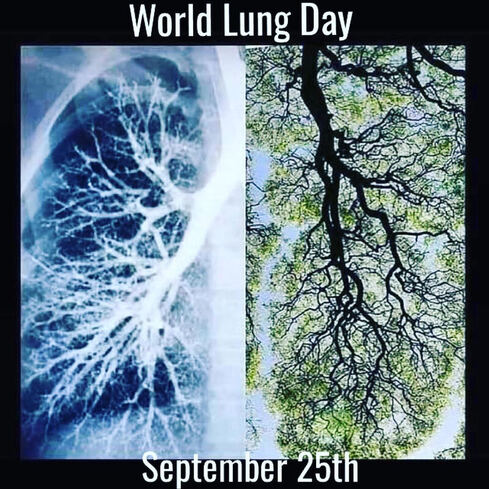

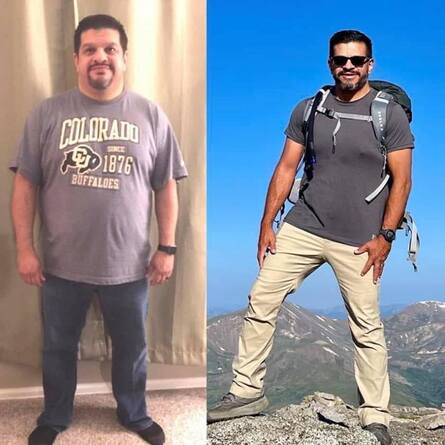
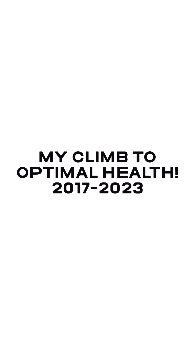


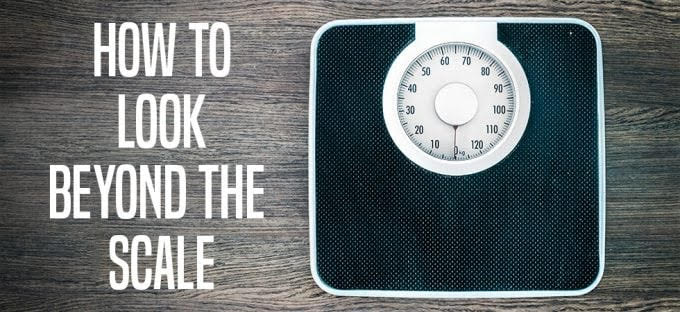
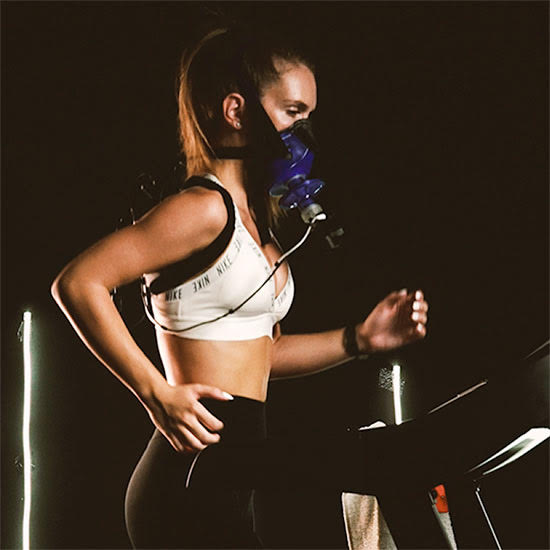



 RSS Feed
RSS Feed